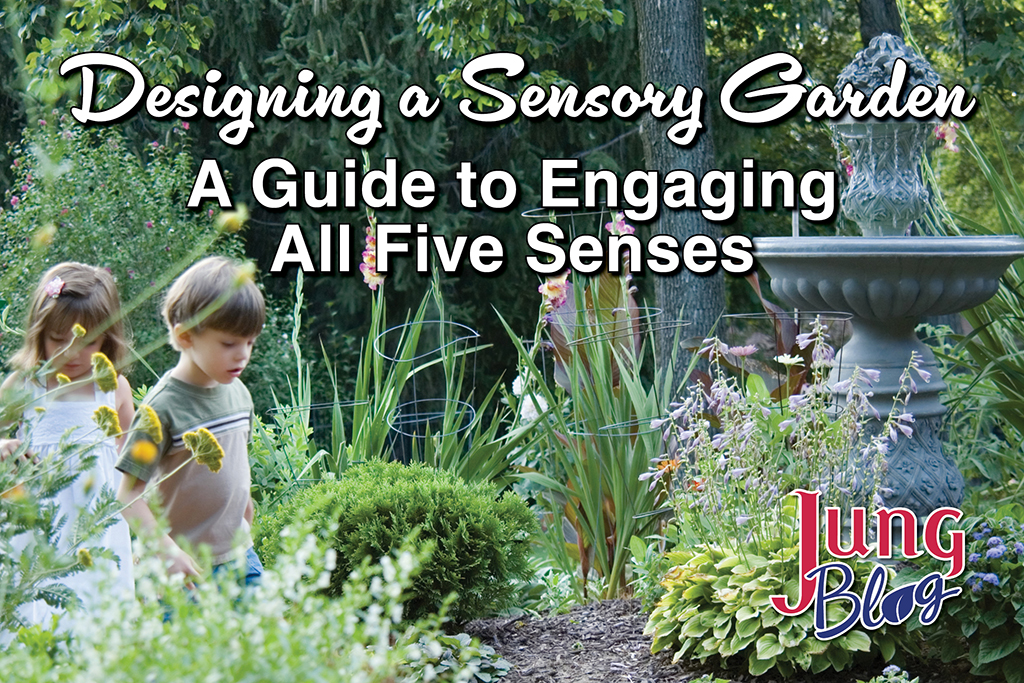Introduction
Creating a sensory garden is a rewarding way to design a space that stimulates all five senses—sight, smell, touch, taste, and hearing. These gardens offer therapeutic benefits, promote relaxation, and enhance well-being for people of all ages, including children, seniors, and individuals with disabilities. This article will guide you through the essentials of creating a sensory garden, covering planning, plant selection, layout ideas, and maintenance tips. Whether you want to build a calming retreat or an engaging outdoor classroom, this guide provides expert advice to help you craft a vibrant, accessible sensory garden.
What Is a Sensory Garden and Why Create One?
Definition and Purpose
A sensory garden is a specially designed outdoor space that encourages interaction through senses. Unlike traditional gardens focused mainly on visuals, sensory gardens engage visitors with textures, scents, sounds, and tastes. These features make the garden inclusive and beneficial for cognitive and emotional development.
Benefits of Sensory Gardens
- Enhances sensory awareness: Helps individuals develop or regain sensory skills.
- Promotes relaxation and stress relief: Natural environments with soothing sounds and scents reduce anxiety.
- Supports therapy and education: Widely used in schools, hospitals, and care centers.
- Encourages social interaction: Creates communal spaces for shared experiences.
Experts from horticultural therapy programs emphasize that sensory gardens can significantly improve mental health and motor skills, especially for people with sensory processing disorders.
Planning Your Sensory Garden: Key Considerations
Assess the Space and Audience
Start by evaluating the available space and who will use the garden. Consider:
- Size and shape: Even small areas can be transformed with vertical planting or container gardens.
- Accessibility: Paths should be wheelchair-friendly with non-slip surfaces.
- User needs: Children, elderly, or people with disabilities may require specific design elements.
Design Principles
- Zoning: Create distinct areas for each sense to avoid sensory overload.
- Safety: Avoid toxic plants and sharp objects.
- Seating: Provide benches or resting spots for comfort.
Consulting a landscape architect or horticultural therapist can help ensure your design meets these criteria effectively.
Choosing Plants and Features for Each Sense
Sight: Colorful and Dynamic Plants
Select plants with vibrant colors and varied shapes to captivate the eyes. Consider:
- Perennials like lavender, echinacea, and sunflowers
- Seasonal flowers for year-round interest
- Varied foliage textures and heights
Smell: Fragrant Plants
Incorporate aromatic herbs and flowers that release pleasant scents:
- Rosemary, mint, and thyme
- Jasmine and gardenia
- Scented geraniums
Touch: Textures to Explore
Add plants with diverse textures and non-plant elements:
- Soft lamb’s ear leaves
- Rough bark or smooth stones
- Water features with gentle movement
Taste: Edible Plants
Grow safe-to-eat herbs, fruits, and vegetables:
- Strawberries, cherry tomatoes
- Basil, chives, and edible flowers like nasturtiums
Hearing: Sound Elements
Integrate auditory stimuli to enrich the experience:
- Wind chimes made of bamboo or metal
- Rustling grasses such as ornamental millet
- Water fountains or birdbaths attracting wildlife
Practical Tips for Building and Maintaining Your Sensory Garden
Step-by-Step Implementation
- Prepare the soil: Test and amend it to suit your plant choices.
- Create accessible paths: Use mulch, gravel, or paving stones.
- Install features: Set up benches, water elements, and sound devices.
- Plant carefully: Group plants by sensory categories and growth needs.
- Label plants: Use clear signage with tactile or braille options for inclusivity.
Maintenance Best Practices
- Regularly prune and deadhead to keep plants healthy.
- Monitor for pests and diseases naturally to protect users.
- Replenish mulch and clean water features frequently.
- Rotate edible plants seasonally for continuous yield.
Engage community volunteers or therapy groups in garden upkeep to foster connection and ownership.
Real-World Examples and Expert Insights
Several institutions have harnessed sensory gardens to great effect. For example, the Royal Horticultural Society highlights how sensory gardens in schools improve concentration and sensory processing in children. Similarly, healthcare facilities report reduced agitation and improved mood among dementia patients after spending time in sensory gardens.
Dr. Emily Baxter, a horticultural therapist, notes, “Sensory gardens are powerful tools that combine nature’s healing with purposeful design. They transform outdoor spaces into inclusive environments that nurture body and mind.”
Conclusion
Creating a sensory garden involves thoughtful planning, plant selection, and design tailored to engage all five senses. These gardens offer therapeutic, educational, and recreational benefits, making them valuable additions to homes, schools, and care centers. By focusing on accessibility, safety, and sensory diversity, you can build a vibrant garden that invites exploration and relaxation.
Start small, involve your community, and watch your sensory garden grow into a sanctuary of sensory delight and well-being. Embrace nature’s power to heal and inspire with your very own sensory garden.
